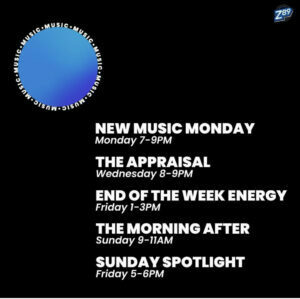Spotify’s Stock Tumbled After Its Mixed Q2 Earnings — But Analysts See the Bigger Picture
Some earnings results are more difficult to interpret than others, and Spotify’s were no exception. Like Universal Music Group’s Q2 earnings, which contained a jumble of metrics headed in opposite directions, the streaming giant’s results were a mixed bag of wins and losses — a contrast to previous quarters when the metrics were in much better alignment.
The market seemed to take the Spotify results poorly, as the company’s share price dropped more than 11% following Tuesday’s earnings release. (Importantly, a pullback of that scope isn’t a surprise given Spotify’s share price was up 112% over the last year through Monday, July 28.) Analysts, however, were more sanguine and focused on the company’s long-term prospects rather than the quarter-to-quarter bumpiness.
Some of the factors that influenced Spotify’s mixed quarter were under its control (subscriber growth, lower-than-expected advertising performance). But some factors were out of its control (foreign exchange losses) while others were a combination of external and internal forces (higher stock-based compensation expense related to Spotify’s soaring share price). That’s a lot to digest.
Spotify’s earnings results highlighted the tension between investors’ desire for neat, linear growth and the untidy realities for companies that report earnings every three months. For a variety of reasons, some quarters will be better than others, and CEO Daniel Ek encouraged investors “to be prepared” for those instances where Spotify spends more money to grow the business over the long term.
A drop in advertising prices, for example, might spur Spotify to “double or triple” its marketing expense, Ek explained. “We generally expect to see more efficiencies as we’re leveraging better and better tools,” he said, “but sometimes that efficiency may mean that the right thing is to actually spend more in the short term to then get it back in the long term.” Translation: The path to success isn’t a straight line.
Equity analysts, who love a clean narrative as much as anybody, tried to make sense of the contrasting indicators. J.P. Morgan analysts called it a “messy” quarter for its mix of positives and negatives. Some analysts slightly lowered their forecasts for revenue and operating income. Everybody pointed to the fact that Spotify will encounter some bumps in the road as it makes investments (which are a drag on earnings) in pursuit of long-term growth (which, to Ek’s point, could help earnings down the road).
But there was nothing in Spotify’s results and executives’ comments that changed analysts’ overall theses. Investors want to see year-over-year growth every quarter, but analysts know that isn’t realistic. In their notes to investors, analysts focused on long-term opportunities to attract subscribers, benefits from current investments and Spotify’s ability to generate additional revenue.
Analysts believe that Spotify will continue to succeed if it makes the platform more engaging. Some of them homed in on two statistics that Spotify mentioned during the earnings call: 350 million users have streamed a video podcast, and video consumption is growing 20 times faster than audio-only consumption. Spotify’s investments in AI could also lead to better engagement. Spotify now has AI playlists in 40 countries, and user engagement with its AI DJ has “nearly doubled” in the last year, Gustav Söderström said during Tuesday’s earnings call.
Another factor in long-term growth is Spotify’s ability to generate revenue in different ways. For most of its history, Spotify has made money selling ads and subscriptions based on music listening. That has changed in recent years, and J.P. Morgan analysts believe the company has the ability to improve monetization outside of the record label/music publisher royalty structure. In other words, podcasts and audiobooks have the potential to help drive revenue without giving 70% of that revenue to music rights holders.
In the end, analysts’ valuation models didn’t change much, if at all. Guggenheim lowered its price target to $800 from $840 and maintained its buy rating. J.P. Morgan maintained its $740 price target. Cantor Fitzgerald left its $640 price target unchanged and reiterated its neutral rating. Bernstein kept its $840 price target and outperform rating. There’s a $200 variance in price targets within those four examples. But considering Spotify closed Friday at $627.15, it’s clear all the analysts feel there is upside for investors willing to hold on through occasional rough terrain.
Powered by Billboard.




